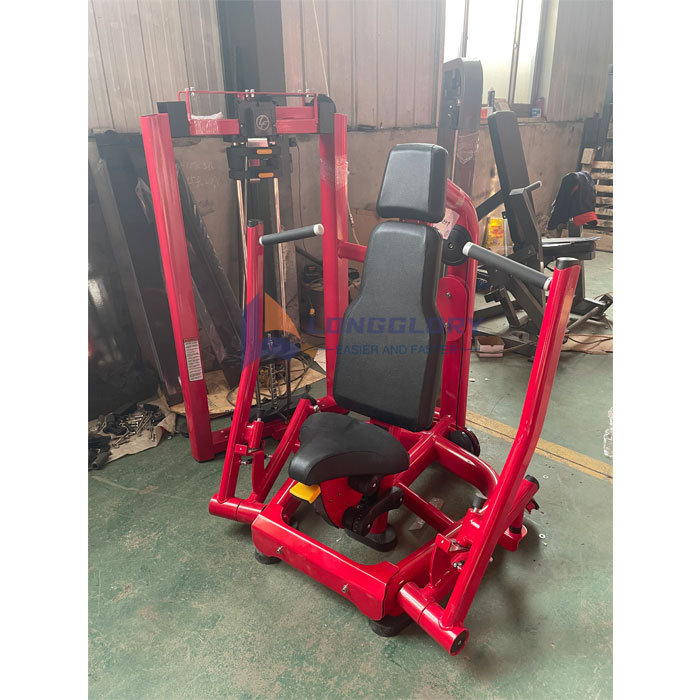What is the difference between pin loaded and plate loaded machines?
2024-12-19
Pin-loaded and plate-loaded machines are two types of resistance equipment commonly used in strength training and fitness. Each type has distinct characteristics, advantages, and is suited for specific user needs. Here’s a comparison:
1. Resistance Mechanism
- Use a weight stack as the source of resistance.
- Resistance is adjusted by inserting a pin into the desired weight plate on the stack.
- The selected weight is lifted using pulleys and cables.
- Use free weight plates for resistance.
- Users manually add or remove plates to achieve the desired resistance.
- Plates are loaded onto pegs or holders on the machine.

2. Ease of Use
- Pin-Loaded Machines:
- Very user-friendly and quick to adjust.
- Ideal for beginners or those who want a simple and efficient workout.
- Often found in commercial gyms because of their convenience.
- Plate-Loaded Machines:
- Require manual loading and unloading of plates, which can be more time-consuming.
- Best suited for intermediate to advanced users who are comfortable handling weights.
3. Customization and Range of Resistance
- Pin-Loaded Machines:
- Limited to the weight stack provided (e.g., 100–300 lbs depending on the machine).
- Adjustments are typically in small increments, allowing for precise resistance changes.
- Plate-Loaded Machines:
- Offer more flexibility as users can load as much weight as the machine can handle.
- Great for individuals who require higher resistance or want to progressively overload beyond the limits of a weight stack.
4. Space Requirements
- Generally take up less space as the weight stack is compactly integrated into the machine.
- Suitable for gyms with limited floor space.
- Plate-Loaded Machines:
- Require additional space to store weight plates and accommodate the machine.
- May not be ideal for smaller gyms or home setups with limited storage.
5. Maintenance and Durability
- Pin-Loaded Machines:
- Require maintenance of cables, pulleys, and weight stacks.
- More moving parts mean a higher likelihood of wear and tear over time.
- Plate-Loaded Machines:
- Fewer moving parts, which often makes them more durable and low-maintenance.
- The primary maintenance involves cleaning and checking the machine’s joints and weight pegs.
6. Cost
- Pin-Loaded Machines:
- Tend to be more expensive due to their integrated weight stacks and complex pulley systems.
- Plate-Loaded Machines:
- Typically less expensive, especially for home users who already own weight plates.
7. Training Style
- Pin-Loaded Machines:
- Provide controlled movements, making them excellent for beginners or those rehabilitating from injuries.
- Help ensure proper form and reduce the risk of injury.
- Offer a more “free-weight” feel, giving users greater control over the range of motion and muscle engagement.
- Suitable for advanced users who want a more natural and functional movement pattern.
8. Versatility
- Pin-Loaded Machines:
- Usually designed for single exercises or limited variations (e.g., leg press, chest press).
- Plate-Loaded Machines:
- Often allow for a wider range of movements and exercise variations, mimicking free-weight exercises more closely.
Conclusion
- Pin-Loaded Machines are ideal for beginners, those focused on controlled movements, and users seeking convenience and ease of use.
- Plate-Loaded Machines are better suited for advanced lifters, those looking for heavier resistance options, and people who value a more free-weight-like workout experience.
The choice between the two depends on personal fitness goals, experience level, and the gym environment.


